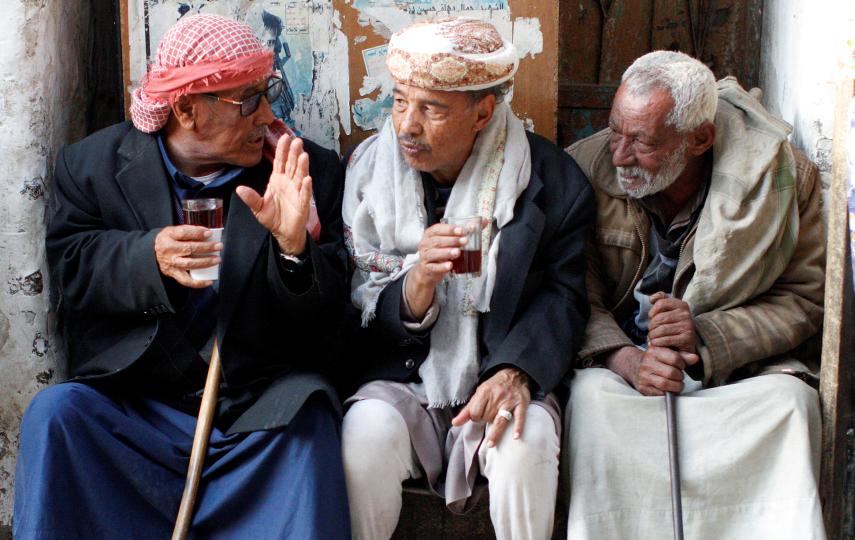Climate change makes life harder for Senegalese farmers in many different ways: shorter rainy seasons, more frequent and longer dry spells and droughts, a lower water table, floods, coastal erosion, destruction of mangroves, and disruption of fish stocks. But most pernicious of all is the salinization of soil across large tracts of coastal and riverine farmland.
In the village of Dioffior, some 150 kilometres southeast of the Senegalese capital, Dakar, residents have mounted a protracted battle against salt: an enemy that contaminates their land, decimates their crops and, as agriculture is the mainstay of the region’s economy, drives up poverty and food insecurity.
Rising sea levels brought about by climate change have greatly increased the salt content of the nearby Sine River. In the vast Sine-Saloum delta, between 700,000 and one million hectares of land have been affected over the last 30 years. The Fatick region, where Dioffior is located, and which is the birthplace of President Macky Sall, has suffered more than most.
“For decades in Sine-Saloum, the soil, which used to be known for its quality and productivity, has been badly damaged by climate change, which has led to the salinization of the waterways of the delta,” explained Seydou Cissé, who works at Senegal’s National Institute of Pedology (the study of soils).
Other problems
Unfortunately, soil salinization is just one of several harmful effects of climate change in Senegal.
In a thesis for his master’s degree in climate change and sustainable development, Charles Pierre Sarr, who now works for Senegal’s environment ministry, noted reduced rainfall and rising temperatures around Dioffior and predicted further decreases of rainfall of 5.4 percent and 12 percent by 2025 and 2050 respectively.
Senegal is “perpetually confronted with the adverse effects of climate change because of its 700-kilometre coastline which is impacted by the rising level of the sea, with the corollary of coastal erosion, the saline intrusion on farmland, the salinization of water resources and the destruction of infrastructure,” Sarr wrote. “Because agriculture is primarily rain-fed, climate change risks compromising efforts to fight poverty and efforts to reach food self-sufficiency.”
Dioffior residents say the rice fields around the village were abandoned some 30 years ago. Since then, locals have worked tirelessly, carrying endless baskets of sand and rock to build dykes that turn lost fields into arable land again. The dykes keep the salty river water at bay and protect bodies of fresh water.
Among those involved are some 200 women, members of an association called Sakh Diam, (“sow peace” in the Wolof language) who have recovered more than 100 hectares of land. They have their eyes set on a much larger area: in 2015 the local authorities allocated them 1,000 salty hectares of farmland.
Sakh Diam has won financial support for its endeavours not only from the government of Senegal but also from those of Belgium and Japan.
“These rice paddies used to be tans,” Marie Sega Sarr, the group’s president, told IRIN as she worked away in her paddy, using the Wolof word for salty land.
“Nothing grew here until the Support Project for Small Local Irrigation (PAPIL) started. The anti-salt dyke you can see over there is Baboulaye 1. Where we are now is Baboulaye 2. There is another one at [the nearby commune of] Djawanda. In all, there are nine dykes around Dioffior built to combat the salinization of our agricultural land.”
PAPIL was set up in the early 2000s by Senegal’s government, with help from partners such as the African Development Bank (AfDB) and the Islamic Development Bank.
PAPIL ran until 2015 and has been replaced by the Multinational Programme for Resilience to Food and Nutritional Insecurity in the Sahel region. The many objectives of the programme include reclaiming thousands more hectares of salinised land in the Fatick region by 2020.
“Our grandparents used to cultivate here and fed themselves from their crops,” said Marie. “Between the arrival of the salty waters and the irrigation project, we had trouble feeding ourselves. Agriculture is our main activity. We were forced into unemployment.”
Sakh Diam wants it work to rejuvenate the region, allowing the community to provide for itself once again.
“We helped gather sand and rocks to build the dykes you can see. That’s been going on for six years. You can see for yourself that wild grass is growing here,” Marie said. “If we get enough rain, we hope we can harvest on this area so as to feed our families as our ancestors did.”
More support needed
Sakh Diam’s secretary general Omar Faye told IRIN: “It is paying off, beginning to show results. We have started to reuse this land to grow rice. Right here, some 80 hectares have been reclaimed.”
In the greater Dioffior area, “we harvested 30,500 tonnes of rice in 2015”, he added.
After growing rice, Marie said the villagers plan to diversify into market gardening, growing potatoes, and peppers. “Last year, poor rains scuppered our plans for market gardens,” she said. “But we still hope we can grow vegetables here.”
In all, almost 60 anti-salt dykes have been built across four regions of Senegal, allowing some 7,000 hectares of once-toxic land to be farmed.
According to the AfDB, this has led to “improved food insecurity, diversified economic activity, higher incomes, less isolated regions, better protected and regenerated ecosystems and stronger communities.”
All the more reason to keep going with such projects, urged Abdoulaye Thiam of the African Collective for Research, Action and Training, an NGO that works on land management issues in Dioffior.
“The battle against salinised land requires a lot of money and long-term programming,” he told IRIN. “What’s also needed is to mobilise the spirit of citizenship and more systematic support from the state, especially of local associations.”
cl-am/ag





